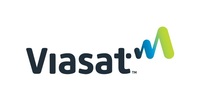Yesterday, Nokia Siemens Networks announced it planned to buy Motorola’s network business for $1.2 billion. The deal could provide Nokia Siemens with major inroads into the North American market and may help the infrastructure provider land deals with more than 50 operators currently using Motorola gear, including China Mobile, Clearwire, Verizon and KDDI.
Wireless Week spoke with Sue Spradley, head of Nokia Siemen’s North America region, about the acquisition, its impact on Nokia Siemens’ business and the challenges the company faces as it moves to integrate 7,500 new employees into its ranks. Here are edited excerpts from the discussion.
Wireless Week: How do you see your prospects in North America shaping up with the acquisition of Motorola’s network division?
 Sue Spradley: Obviously, it will increase our installed base and customers in ways that were not [there before]. For example, we sell to Sprint today but we don’t happen to sell to Sprint’s wireless portfolio. With Verizon, we have the IMS and optical business with them and now we’ll have an installed CDMA base. Although we don’t currently have much business with Clearwire, it’s an all-upside opportunity. There’s not a whole lot of cross-over into the Canadian market with Motorola.
Sue Spradley: Obviously, it will increase our installed base and customers in ways that were not [there before]. For example, we sell to Sprint today but we don’t happen to sell to Sprint’s wireless portfolio. With Verizon, we have the IMS and optical business with them and now we’ll have an installed CDMA base. Although we don’t currently have much business with Clearwire, it’s an all-upside opportunity. There’s not a whole lot of cross-over into the Canadian market with Motorola.
WW: Given that the top three carriers in the U.S. have already announced vendors for their 4G deployments, with Sprint doing so by partnering with Clearwire, I’m wondering where you see avenues for future contracts outside of the ones you’ll be acquiring through the Motorola acquisition.
Spradley: This wasn’t just about acquiring things for the 4G capabilities. It’s early days for 4G and I don’t think we certainly won’t sit and assume that all decisions are done and all opportunities to expand and grow are taken. In the meantime, Motorola has a very healthy business with Clearwire’s WiMAX business. We see that continue to grow, and if they go to a TDD-type LTE environment, that would be a great fit for us. Verizon, let’s see where they go with 4G, but they have a great CDMA business today. Same thing with Sprint. The one exception, and they would have nothing to do with us anyway based on their technology choice, is AT&T. They’re sticking with incumbents that they had for 3G.
WW: Yankee Group recently posted a blog that conjectured Nokia Siemens could land a deal with Verizon if Ericsson or Alcatel-Lucent stumbles. What are your thoughts about that?
Spradley: I don’t think it’s for me to comment on the situation, as much as I’d love to. That’s something the operators need to do. This is about our desire to expand our portfolio as well as our customer base in North America, demonstrate that we have both the scale and will to win in this market, and with that leverage our portfolio products. If in the process of doing that somebody decides to change or expand vendors, we’d be delighted to be at the table.
WW: Nokia Siemens CEO Rajeev Suri called North America a “weak spot” for the company in a conference call yesterday. Have you been experiencing difficulties gaining a foothold in the NA market and what have those difficulties been?
Spradley: Let me put Rajeev’s comments in context. He was actually meaning it in relative to market share from a global perspective and I also think he was talking about the companies Nokia and Siemens prior to the merger. Since then, I guess I would say just the opposite. As he pointed out, we now have business with Telus, Bell, Videotron, Globalive, Shaw in Canada, and we’ve run Embarq, the IMS core of Verizon. We continue to be half of T-Mobile’s network in the United States and run AT&T’s 2G . I think we have both scale and size.
That being said, it’s all relative. Nokia Siemens’ position in North America compared to the rest of the world… the math just didn’t work. We had to acquire in order to really gain that share because of the sheer installed base the market has here. The Motorola acquisition makes us a clear number three in this market.
WW: I know Motorola’s really been pushing TD-LTE with its deployment at the Shanghai Expo and the support of China Mobile could really make the technology huge. Are you going to follow Motorola’s aggressive path forward on TD-LTE development?
Spradley: TD-LTE has been something Motorola and Nokia Siemens have been mutually sharing as an agreed-to strategy. It just happens that many of the customers in Europe and other places where we’ve announced LTE have been FDD because of their spectrum holdings or existing technology. We see TD-LTE as another path, and depending on the spectrum you have, it makes great sense. As you know, the Chinese market is one opportunity and the United States has opportunities as well.
WW: Motorola is retaining the patents related to its wireless network infrastructure business. Why didn’t Nokia Siemens insist on getting the intellectual property rights in the acquisition?
Spradley: While they are retaining the rights, we do have full access as needed. It’s very normal in the industry that we would trade intellectual property rights. Nokia Siemens, Motorola, Ericsson and Alcatel-Lucent all work together on intellectual property because no one owns them all. We feel very comfortable with Motorola retaining those rights and we feel comfortable that we have the access to them as needed.
WW: Nokia Siemens is getting something like 7,500 Motorola employees through the acquisition. How do you plan to integrate that huge influx of people and merge the corporate cultures of the two companies?
Spradley: Nokia Siemens came from a pretty big integration so we are comfortable and know what to do. We need to take what we learned from that, both positive and negative, and use it as we integrate with Motorola. It’s not something we’re rushing into, we’ll do it as we progress so we don’t disturb the customer base or employees. On a quarterly basis, we integrate large customers and service organizations as we take over their managed services. That’s allowed us to come a long way with bringing large numbers of employees on board, bring them into our system, information technology and payroll.
We’re also going to be extremely cognizant that it isn’t just integrating a bunch of people and giving them a job. It’s about having a mutually shared culture. Riding in the elevator at Motorola today, I noticed their employee values and was matching them to ours. They’re very close. I think we’re going to find it’s not a bridge too far by any means. Sometimes people talk about Nokia Siemens like its just a German and Finnish culture, but in fact we’re a very global culture. I think Motorola will complement that in a big way.
WW: Nokia Siemens mentioned it was considering partnering with Motorola on public safety but the details were pretty limited. Could you tell me a little more about that?
Spradley: Motorola obviously has a great heritage with public safety, so there’s a natural opportunity for us to partner in that space but we’ll have other partners. It’s an area where it’s all about working together to deliver something.
WW: Are you hoping to capitalize at all on Obama’s public safety network push?
Spradley: Sure, everybody will. That’s the great thing about the broadband and the public safety announcements: They’re all about broad capability for the government and private sector and consumer. We’ll be a part of that as well.
Filed Under: Infrastructure




